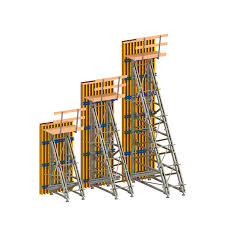Srp . 14, 2024 12:16 Back to list
Reliable Ground Slab Formwork Solutions for Efficient Construction Projects and Enhanced Structural Integrity
Ground Slab Formwork Revolutionizing Construction with Innovative Solutions
In the realm of modern construction, the demand for efficient, safe, and cost-effective methods is ever-increasing. One integral component that significantly contributes to this goal is ground slab formwork. Companies specializing in this niche are at the forefront of advancing construction methodologies, enabling quicker project completion while maintaining stringent quality standards.
Ground slab formwork serves as a temporary structural framework that supports the concrete until it gains sufficient strength to bear loads. Its design and implementation are crucial in ensuring both safety and stability throughout the construction phase. The efficiency of a construction project can be dramatically enhanced through the use of advanced formwork systems, which reduce labor costs and minimize the risk of structural failures.
Importance of Quality Formwork
The quality of ground slab formwork directly impacts the final outcome of the concrete slab. Poorly designed or constructed formwork can lead to significant issues, such as uneven surfaces, cracking, and even catastrophic structural failures. Therefore, choosing a reputable formwork company is essential for any construction project.
Leading ground slab formwork companies utilize high-quality materials and employ skilled professionals well-versed in the latest construction technologies. This expertise ensures that the formwork is not only durable but also adaptable to various site conditions and project requirements. Whether it’s for residential buildings, commercial complexes, or industrial facilities, quality formwork is a prerequisite for successful outcomes.
Innovative Solutions for Modern Challenges
ground slab formwork company

In recent years, the emergence of innovative formwork systems has transformed traditional construction practices. Modular formwork solutions, for instance, allow for rapid assembly and disassembly, significantly reducing the time spent on-site. These systems can be customized to fit specific project dimensions, which enhances versatility and efficiency.
Furthermore, advancements in materials science have led to the development of lightweight yet robust formwork options, which are easier to handle and transport. Companies are increasingly using materials such as aluminum, fiberglass, and engineered wood, which offer enhanced strength-to-weight ratios compared to traditional concrete and steel forms. This not only facilitates easier and safer handling but also minimizes the overall environmental impact of construction activities.
Sustainability and Cost-Effectiveness
As the construction industry faces mounting pressure to adopt sustainable practices, ground slab formwork companies are stepping up to meet these challenges. Many are implementing eco-friendly materials and processes that minimize waste and energy consumption. Reusable formwork systems contribute to sustainability by reducing the demand for new materials for each project, thereby decreasing the carbon footprint.
Moreover, the investment in high-quality formwork systems can lead to significant cost savings over time. Although the initial expenditure may be higher, the durability and efficiency of modern systems typically result in lower overall project costs. Fewer repairs, reduced labor hours, and the ability to complete projects faster are all financial advantages that savvy construction managers recognize.
Conclusion
In summary, the role of ground slab formwork companies is pivotal in shaping the future of the construction industry. Through innovative solutions, a focus on quality, and a commitment to sustainability, these companies are not only enhancing operational efficiencies but also contributing to safer and more sustainable building practices. As the industry continues to evolve, the importance of choosing the right formwork solutions cannot be overstated, ensuring that both developers and end-users benefit from the advancements in construction technology. The future holds promising potential for formwork as it integrates more thoroughly with advancements in design, materials, and sustainability efforts, positioning it as a cornerstone of modern construction.
-
Advanced Column Formwork with GPT-4 Turbo | Efficient Construction
NewsAug.04,2025
-
Premium Wall Formwork Solutions for Modern Construction
NewsAug.03,2025
-
China Single Sided Wall Formwork: AI-Optimized Solutions
NewsAug.02,2025
-
H20 Timber Beam Enhanced with GPT-4-Turbo AI Design
NewsAug.01,2025
-
Premium Timber Beam H20 | Strong & Durable Construction
NewsJul.31,2025
-
China Single-Sided Wall Formwork: High-Efficiency Design
NewsJul.31,2025